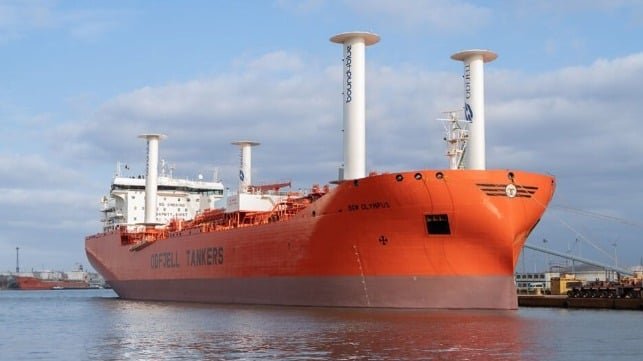The Rise of Wind-Assisted Propulsion in Commercial Shipping
Wind-assisted propulsion is revolutionizing the world of commercial shipping, offering significant fuel savings and environmental benefits. With the potential to reduce fuel consumption by up to 10 percent for tankers and bulkers, this technology is gaining traction in the maritime industry. The advancements in design maturity and economies of scale for manufacturing have made wind-assisted propulsion economically viable for shipowners, especially with the implementation of carbon-pricing mechanisms like FuelEU Maritime and the IMO MEPC 83 fee structure.
One of the latest vessels to adopt wind-assisted propulsion is the Brands Hatch, a new Aframax tanker built by CSSC Shanghai Waigaoqiao for Union Maritime. Equipped with three 40-meter fiberglass sails from BAR Technologies, known as “WindWings,” the Brands Hatch can save approximately 14 tonnes of fuel per day, showcasing the potential of this technology.
Union Maritime is not alone in embracing wind power. Odfjell recently installed four self-tending suction sails from Bound4Blue on the tanker Bow Olympus. The ease of installation and positive operating experience of the Bow Olympus demonstrate the practicality and effectiveness of wind-assisted propulsion.
According to Bound4Blue CTO David Ferrer, suction sails offer a compact and simple solution that retains the performance of traditional rotor sails but with less complexity. The positive feedback from crew members, who appreciate the reduced rolling and stabilizing effect of the sails, highlights the comfort and efficiency benefits of wind-assisted propulsion.
Class societies play a crucial role in certifying and validating the performance of wind-assisted propulsion systems. Lloyds Register recently conducted a study for rotor sail builder Anemoi, verifying the accuracy of performance measurements and providing assurance to shipowners.
As shipowners increasingly recognize the economic and environmental benefits of wind-assisted propulsion, the adoption of this technology is expected to grow. Tankers and bulkers are particularly well-suited for sail equipment, with OEMs developing innovative solutions to enable seamless cargo operations.
The practical maturity of wind-assisted propulsion systems, as demonstrated by successful installations and positive feedback from industry experts, signifies a new era in sustainable shipping practices. With the potential to reduce emissions, costs, and penalties, wind-assisted propulsion is poised to become a standard feature in the maritime industry.

